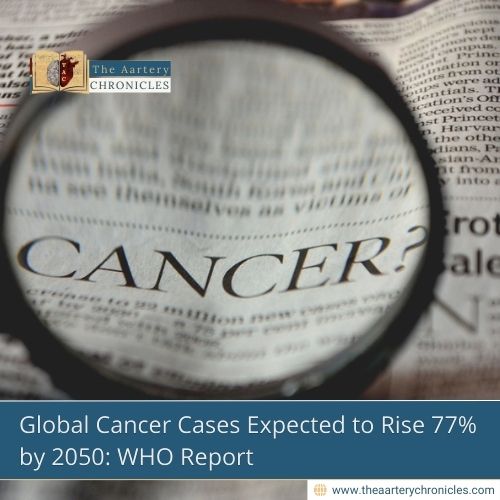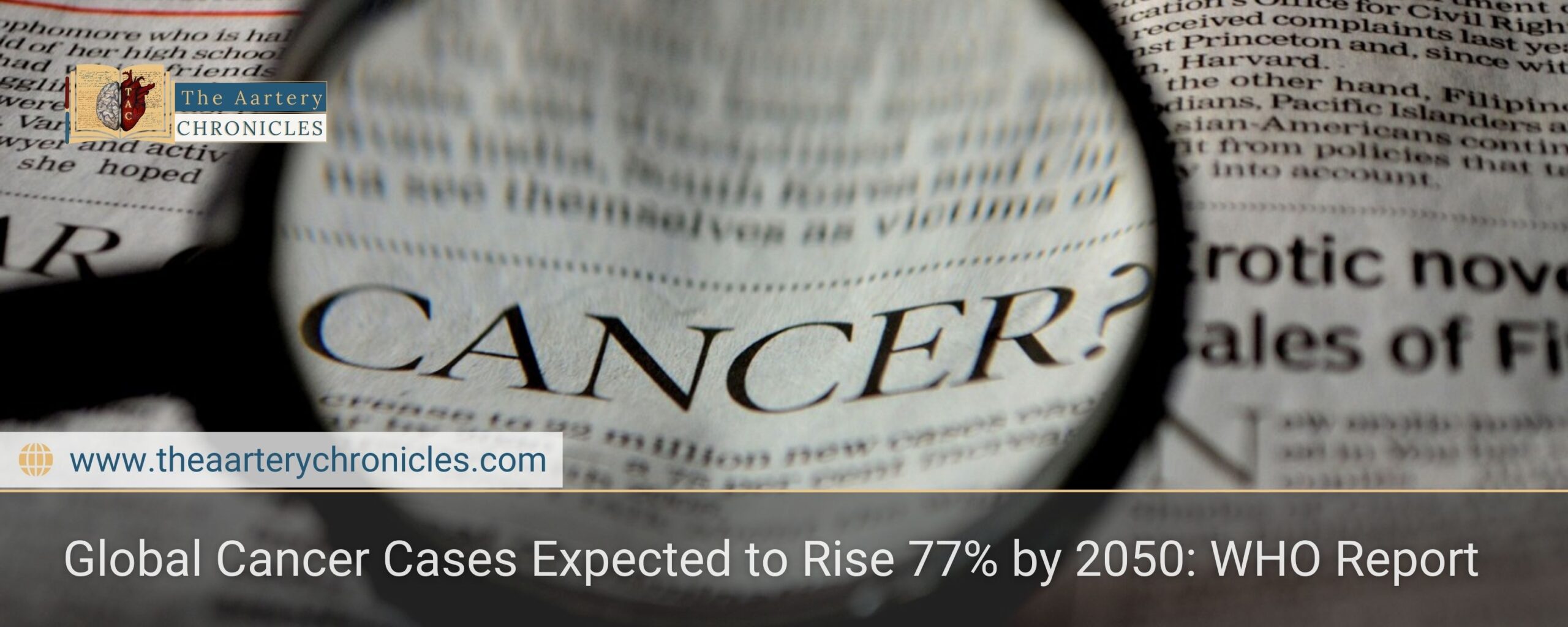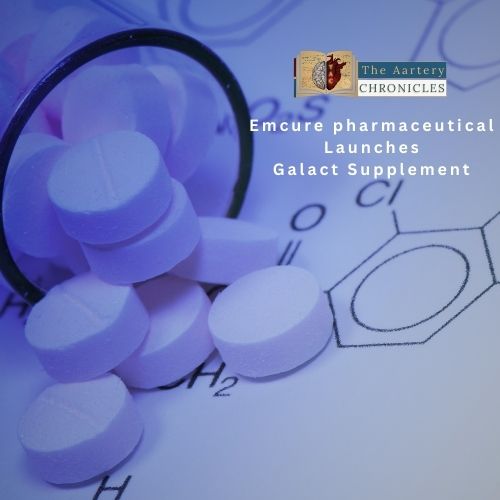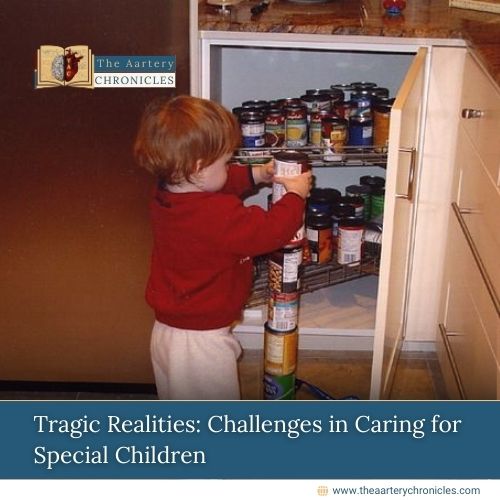

Global Cancer Cases Expected to Rise 77% by 2050: WHO Report
Cancer continues to be a major global health challenge, with cases and deaths rising every year. According to a new report by the World Health Organization (WHO), the number of new cancer cases is projected to increase by 77% by the year 2050. The study highlights key risk factors and the uneven impact of this growing health burden across different regions and socioeconomic levels.
Sharp Increase in Cancer Cases by 2050
The WHO’s International Agency for Research on Cancer (IARC) estimates that over 35 million new cancer cases will be recorded in 2050, compared to approximately 20 million in 2022. This significant rise is attributed to population growth, ageing, and increasing exposure to risk factors linked to socioeconomic development.
Key Risk Factors: Tobacco, Alcohol, Obesity, and Pollution
The report identifies tobacco use, alcohol consumption, obesity, and air pollution as primary contributors to the rising cancer rates. As people adopt lifestyles that involve higher consumption of tobacco and alcohol, coupled with unhealthy diets and sedentary habits, the risk of developing cancer increases. Additionally, environmental pollution remains a major concern.
Disproportionate Impact on Different Regions
While high-income countries will see the largest increase in case numbers, low- and middle-income countries will experience the greatest proportional rise. The report projects a 142% increase in new cancer cases in low-Human Development Index (HDI) countries and a 99% rise in medium-HDI countries. This uneven distribution highlights the disparities in healthcare resources, as poorer countries struggle to manage the growing burden of cancer.
Cancer Mortality Expected to Double
The study also warns that cancer-related deaths in low- and middle-income countries could nearly double by 2050. The lack of access to early detection, treatment, and healthcare infrastructure puts these nations at a greater risk of poor outcomes.
The Most Common Types of Cancer
The three most frequently diagnosed cancers are:
- Lung Cancer: Accounts for 12.4% of new cases and remains the deadliest, responsible for 18.7% of cancer deaths.
- Breast Cancer: Represents 11.6% of cases and 6.9% of deaths.
- Colon Cancer: Makes up 9.6% of cases and 9.3% of deaths.
Liver cancer is also a significant contributor to cancer mortality, causing 7.8% of deaths.
Age and Cancer Risk
Ageing plays a major role in cancer development. About 75% of new cancer cases occur in people over the age of 55, while individuals under 29 account for less than 3% of cases. As people grow older, their cells accumulate damage, increasing the likelihood of cancer. While some of this damage happens naturally, external factors such as smoking, alcohol, and UV exposure contribute significantly.
Europe Faces a Higher Cancer Burden
Despite having only 10% of the world’s population, Europe accounts for 25% of global cancer cases. This is due to high rates of common cancers such as prostate and breast cancer. In contrast, Africa, which houses 20% of the world’s population, had fewer than 6% of cases. The continent’s younger demographic may explain the lower prevalence of many cancers, except for cervical cancer, which remains widespread in sub-Saharan Africa.
Men at Higher Risk
Men are more likely to develop and die from cancer than women, accounting for 56% of cancer deaths. One major reason is that men smoke more than women, increasing their risk of lung cancer. However, women also experience a significant cancer burden, especially at younger ages.
Conclusion
Cancer remains a leading cause of death worldwide, and the number of cases is expected to rise dramatically in the coming decades. Addressing this crisis requires urgent action, including reducing key risk factors, improving healthcare infrastructure, and ensuring equal access to early detection and treatment. Without intervention, the growing cancer burden will place immense strain on healthcare systems, particularly in lower-income countries.
Source: Inputs from various media Sources

Priya Bairagi
Reviewed by Dr Aarti Nehra (MBBS, MMST)
I’m a pharmacist with a strong background in health sciences. I hold a BSc from Delhi University and a pharmacy degree from PDM University. I write articles and daily health news while interviewing doctors to bring you the latest insights. In my free time, you’ll find me at the gym or lost in a sci-fi novel.








